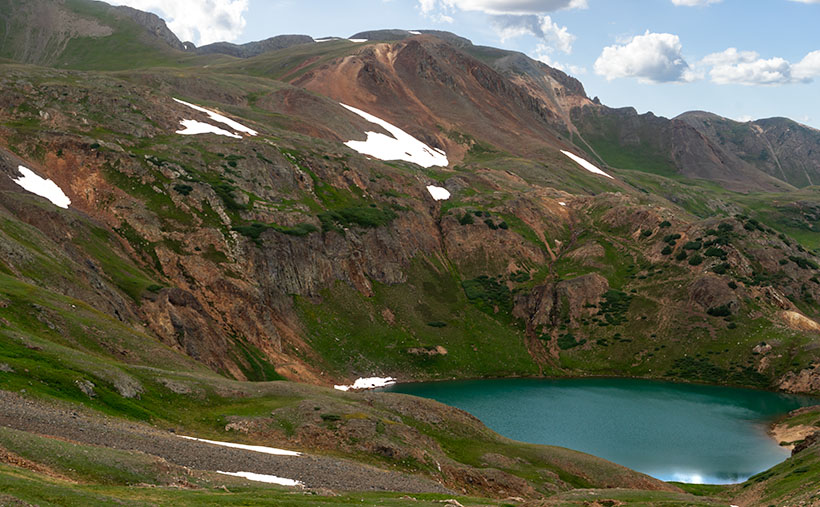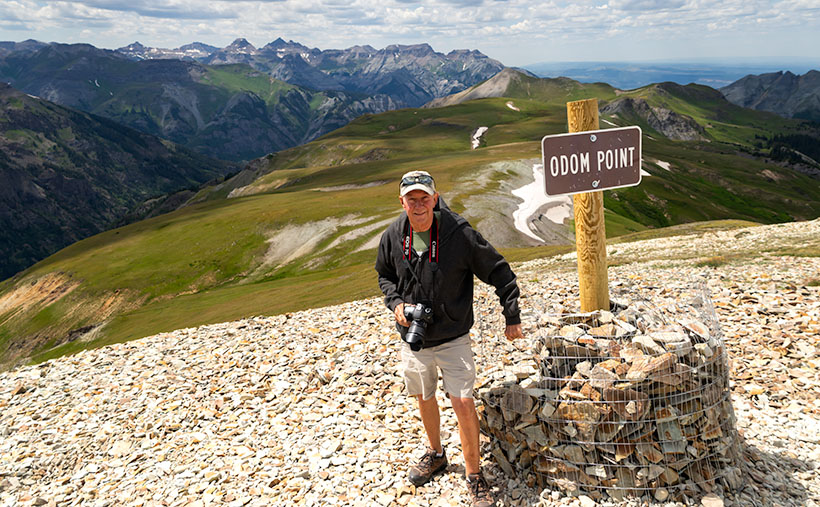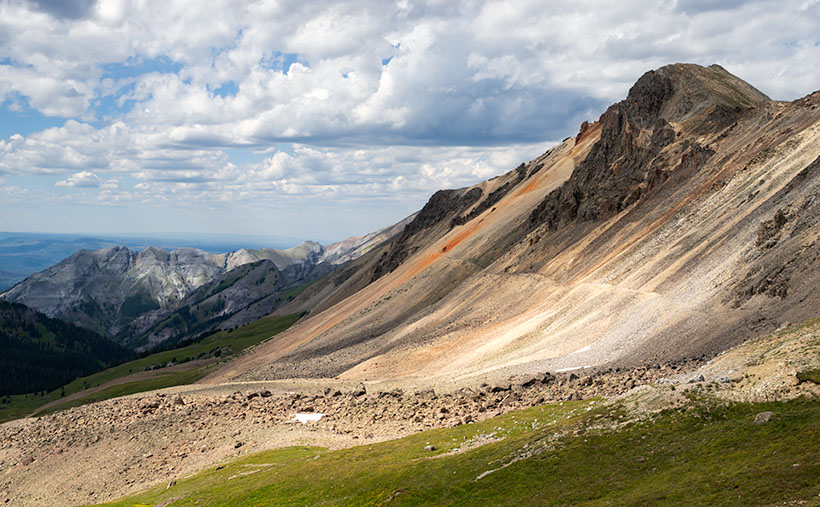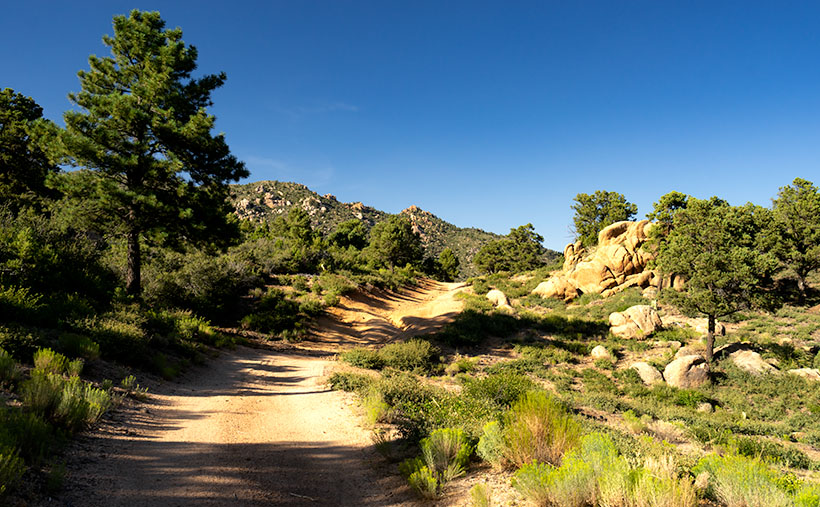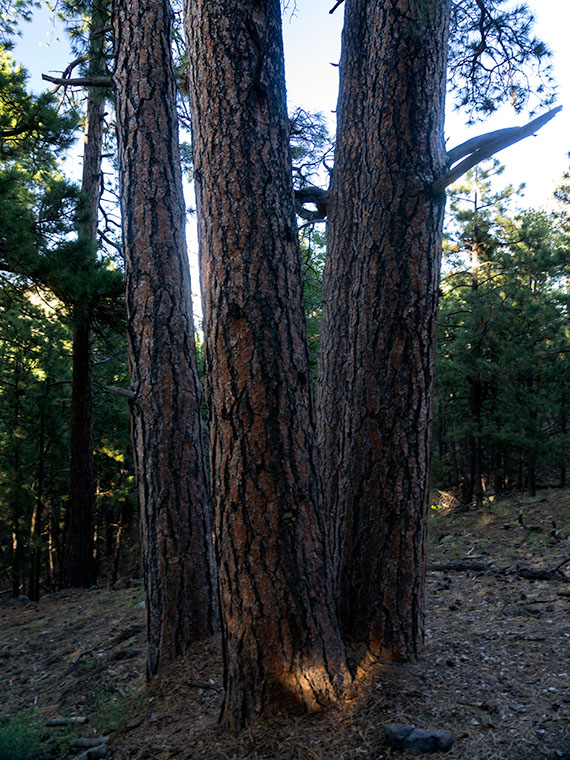The day was getting late, and before Fred and I could go back, we needed to find one final pass to cross and return to Silverton—and eventually Durango. When we stopped to enjoy Lake Como—last week’s photo—it turns out that we were already near Hurricane Pass. Unlike the other passes, we didn’t have to crawl down one mountainside and up another. Instead, the road followed the ridgeline for a half-mile, and voila.
Unfortunately, Hurricane Pass wasn’t as photogenic as the others that day. The road simply turned east for a bit before disappearing down a crack. Of course, the crack opened into a gulch, then a river valley as we descended 5,000 feet into civilization. It was an anticlimactic way to end the day. The trail was soon gravel followed quickly by asphalt; with guardrails, of all things.
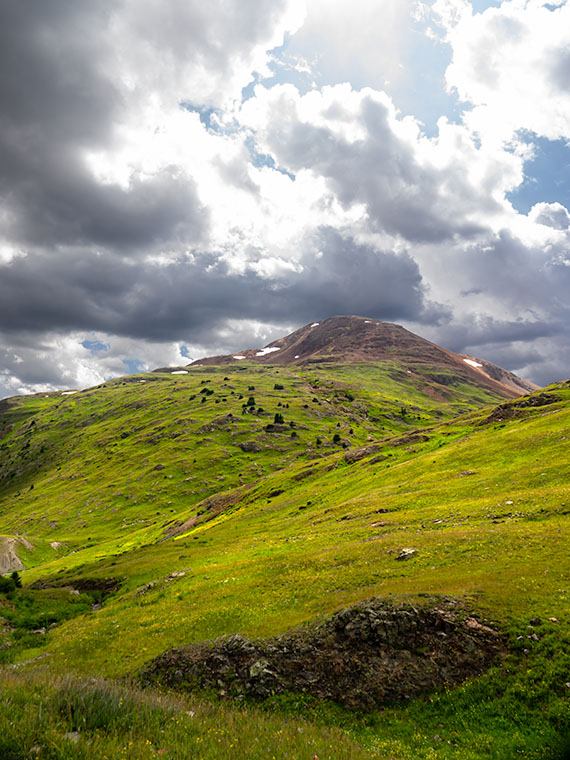
But don’t worry, I come bearing gifts. All during our outing, puffy little clouds filled the sky. They seemed to bump into one another like the balls on a billiard table. Then they would part again leaving large patches of blue sky. On our way down the hill, it started to rain—while the sun was shining. As we rounded a bend in the road, the sun appeared in one of those patches and backlit the mountainside. It’s one of those moments where the grass becomes iridescent and glows. I’ve seen this before in New Zealand. I failed to capture it there, but I think this week’s image is close. I call it Sun Showers. The mountain that we’re looking up as maybe Hurricane Peak, but I’m not sure. In case you’re wondering—yes, those are the Sun’s rays at the top. Did I tell you about the steep angles we experienced during this trip?
You can see a larger version of Sun Showers on its Web Page by clicking here. Be sure to come back next week when I’ll show you my favorite image from our adventure exploring Colorado’s San Juan Mountains in Fred’s Toyota—oh, sorry—Fred’s Jeep.
Until next time — jw

